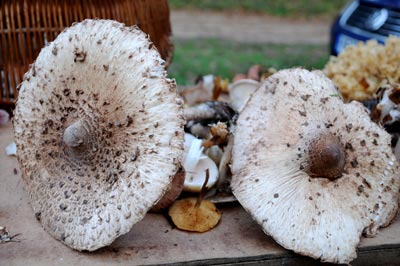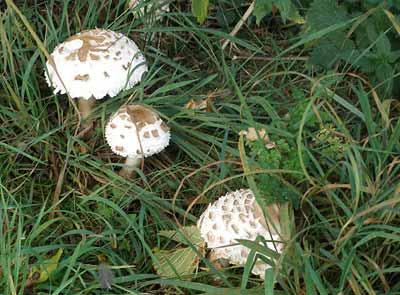Ripe tomatoes cooked down with onions and garlic, puréed and sieved to create a thick, rich tomato sauce.

An incorrect but frequently used spelling for "coulemelle", the parasol mushroom. Good baked with butter and garlic, or fried.
A disc of soft cheese made with cow's milk, similar to Brie de Coulommiers but smaller. It has a white, creamy paste with holes and a natural mould rind. It is made on farms and factories around Coulommiers and elsewhere in the Île-de-France. Demi-Coulommiers is a half-sized cheese. This cheese is eaten all year round and is made with raw or pasteurised milk, having 40% fat (dry) or more. The curds are uncooked and unpressed. It may be found in the following dimensions: 12.5 - 15 cm ( 5-6") diameter x 3-4 cm ( 1½-2") deep, weighing 400-500 g (14-18 oz). Affinage is usually 4-8 weeks. When well ripened it acquires an almond-like flavour.

Parasol mushroom. Good baked with butter and garlic, or fried.
"Naked neck." An oddity. This is a mutation that arose on a farm in Clamart in 1992 on the farm of M Piere Delambre. He noticed three ducklings in a brood of colverts (mallards) which lacked feathers on their necks and were only partially feathered on their head and abdominal areas, with no scales on their feet and atrophied large wing feathers. The male reaches around 1.2 kg, the female 1.1 kg, with eggs at around 50-60 g with a greenish shell. They are said to be a delicate breed.